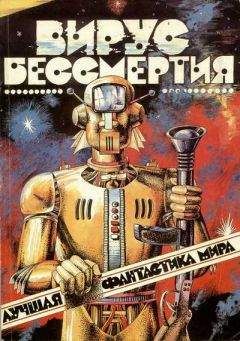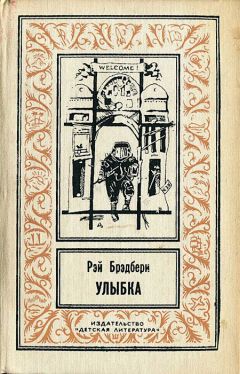Ознакомительная версия.
178
Все оказывается еще сложнее, так как имеются данные о том, что в неволе при определенных условиях у беличьих обезьян наблюдается статусное разделение в группах. См.: Bashaw, Meredith J., Chelsea McIntyre, and Nicole D. Salenetri. 2011. “Social organization of a stable natal group of captive Guyanese squirrel monkeys (Saimiri sciureus sciureus).” Primates 52:361–71.
Boehm, C. 1999. Hierarchy in the Forest: The Evolution of Egalitarian Behavior. Cambridge, MA: Harvard University Press; Boehm, C. 2012. Moral Origins: The Evolution of Virtue, Altruism, and Shame. New York: Basic Books.
Boehm, C. 2000. “Conflict and the evolution of social control.” Journal of Consciousness Studies 7:79–101. Special Issue on Evolutionary Origins of Morality; Leonard Katz, guest editor.
Boehm, 2012. “Ancestral hierarchy and conflict.”
Camerer, Colin F. 2003. Behavioral Game Theory: Experiments in Strategic Interaction. Princeton, NJ: Princeton University Press.
Sanfey, Alan G., James K. Rilling, Jessica A. Aronson, Leigh E. Nystrom, and Jonathan D. Cohen. 2003. “The neural basis of economic decision-making in the ultimatum game.” Science 300:1755–58.
Brosnan, S. F., C. Talbot, M. Ahlgren, S. P. Lambeth, and S. J. Schapiro. 2010. “Mechanisms underlying responses to inequitable outcomes in chimpanzees, Pan troglodytes.” Animal Behaviour 79:1229–37.
Ho, Arnold K., et al. 2012. “Social dominance orientation: Revisiting the structure and function of a variable predicting social and political attitudes.” Personality and Social Psychology Bulletin 38:583–606.
Sapolsky, Robert M. 2004. “Social status and health in humans and other animals.” Annual Review of Anthropology 33:393–418.
Marmot, Michael. 2004. The Status Syndrome: How Social Standing Affects Our Health and Longevity. New York: Times Books.
Chiao, Joan Y., Reginald B. Adams Jr., and Peter U. Tse. 2008. “Knowing who’s boss: fMRI and ERP investigations of social dominance perception.” Group Process and Intergroup Relations 11:201–14.
Kishida, Kenneth T., Dongni Yang, Karen Hunter Quartz, Steven R. Quartz, and P. Read Montague. 2012. “Implicit signals in small group settings and their impact on the expression of cognitive capacity and associated brain responses.”Philosophical Transactions of the Royal Society of London B: Biological Sciences 367:704–16.
Yee, Vivian. 2013. “Grouping Students by Ability Regains Favor in Classroom.” The New York Times, June 9, www.nytimes.com/2013/06/10/education/grouping-students-by-ability-regains-favor-with-educators.html?pagewanted=all&_r=0.
Godoy et al., 2007, “Signaling by consumption.”
См. примечание 1 к главе 1.
Smith, Eric Alden, Monique Borgerhoff Mulder, Samuel Bowles, Michael Gurven, Tom Hertz, and Mary K. Shenk. 2010. “Production systems, inheritance, and in equal ity in premodern societies.” Current Anthropology 51:85–94; Bowles, Samuel, Eric Alden Smith, and Monique Borgerhoff Mulder. 2010. “The emergence and persistence of inequality in premodern societies.” Current Anthropology 51:7–17.
Smith, E. A., et al., 2010, “Production systems, inheritance, and inequality.”
Boehm, 2012, “Ancestral hierarchy and conflict.”
Ribeiro, A. 1986. Dress and Morality. London: Holmes & Meier.
Ribeiro, A. 1986. Dress and Morality. London: Holmes & Meier.
Frank, R. H., 2011, Darwin Economy; Frank, 1999, Luxury Fever.
Kaburu, Stefano S. K., Sana Inoue, and Nicholas E. Newton-Fisher. 2013. “Death of the alpha: Within-community lethal violence among chimpanzees of the Mahale Mountains National Park.” American Journal of Primatology 75:789–97.
Mitani, John C. 2009. “Cooperation and competition in chimpanzees: Current understanding and future challenges.” Evolutionary Anthropology 18:215–27.
Mitani, 2009. “Cooperation and competition.”
Hey, Jody. 2010. “The divergence of chimpanzee species and subspecies as revealed in multipopulation isolation-with-migration analyses.” Molecular Biology and Evolution 27:921–33.
Hare, Brian, Victoria Wobber, and Richard Wrangham. 2012. “The selfdomestication hypothesis: Evolution of bonobo psychology is due to selection against aggression.” Animal Behaviour 83:573–85.
Watts, David P., et al. 2012. “Diet of chimpanzees (Pan troglodytes schweinfurthii) at Ngogo, Kibale National Park, Uganda, 1. Diet composition and diversity.” American Journal of Primatology 74:114–29.
Robert G. Franciscus, et al. 2013. “Anatomically Modern Humans as a ‘Selfdomesticated’ Species: Insights from Ancestral Wolves and Descendant Dogs.” The 82nd Annual Meeting of the American Association of Physical Anthropologists.
Вопрос о войнах на раннем развитии человечества представляется спорным. См.: Bowles, Samuel. 2009. “Did warfare among ancestral hunter-gatherers affect the evolution of human social behaviors?” Science 324:1293–98; Fry, Douglas P., and Patrik Soderberg. 2013. “Lethal aggression in mobile forager bands and implications for the origins of war.” Science 341:270–73.
Henrich, Joseph, Robert Boyd, and Peter J. Richerson. 2012. “The puzzle of monogamous marriage.” Philosophical Transactions of the Royal Society of London B: Biological Sciences 367:657–69.
Gray, Peter B. 2011. “The descent of a man’s testosterone.” Proceedings of the National Academy of Sciences of the United States of America 108:16141–42.
Hector, Andy, and Rowan Hooper. 2002. “Ecology. Darwin and the first ecological experiment.” Science 295:639–40.
Losos, Jonathan B. 2010. “Adaptive Radiation, Ecological Opportunity, and Evolutionary Determinism.” American Society of Naturalists E. O. Wilson Award Address. The American Naturalist 175:623–39.
См., например: Rainey, Paul B., and Michael Travisano. 1998. “Adaptive radiation in a heterogeneous environment.” Nature 394:69–72; and Brockhurst, Michael, Nick Colegrave, David J. Hodgson, and Angus Buckling. 2007. “Niche occupation limits adaptive radiation in experimental microcosms.” PloS One 2: e193.
Sulloway, Frank J. 1996. Born to Rebel: Birth Order, Family Dynamics, and Creative Lives. New York: Pantheon.
Plomin, R., and D. Daniels. 1987. “Why are children in the same family so different from one another?” Behavioral and Brain Sciences 10:1–60.
“Eli Manning Talking Some Hoops and Some Pigskin.” 2014. Fox Sports Radio, June 11. www.foxsportsradio.com/onair/jay-mohr-sports-50067/eli-manning-talking-some-hoops-and-12451118/.
Sulloway, 1996. Born to Rebel.
Hsu, Ming, Cedric Anen, and Steven R. Quartz. 2008. “The right and the good: Distributive justice and neural encoding of equity and efficiency.” Science 320:1092–95.
Nozick, Robert. 1974. Anarchy, State, and Utopia. New York: Basic Books. p. 245.
Nozick, 1974, Anarchy, State, and Utopia, p. 246.
Epstein, David. 2013. The Sports Gene: Inside the Science of Extraordinary Athletic Performance. New York: Penguin.
Acemoglu, Daron, and James. A. Robinson. 2012. Why Nations Fail: The Origins of Power, Prosperity, and Poverty. New York: Crown Business.
Inglehart, Ronald, and Wayne E. Baker. 2000. “Modernization, cultural change, and the persistence of traditional values.” American Sociological Review 65:19–51.
Jost et al., 2012, “Why men (and women) do and don’t rebel.”
Lee, I–Ching, F. Pratto, and B. T. Johnson. 2011. “Intergroup consensus/disagreement in support of group-based hierarchy: An examination of sociostructural and psycho-cultural factors.” Psychological Bulletin 137:1029–64.
Barker, J. L., P. Barclay, and H. K. Reeve. 2012. “Within-group competition reduces cooperation and payoffs in human groups.” Behavioral Ecology 23:735–41.
Henrich, Joseph, Robert Boyd, and Peter J. Richerson. 2012. “The puzzle of monogamous marriage.” Philosophical Transactions of the Royal Society of London B: Biological Sciences 367:657–69.
Sherif, M., O. J. Harvey, B. J. White, W. R. Hood, and C. W. Sherif. 1954/1961. The Robbers Cave Experiment: Intergroup Conflict and Cooperation. Norman, OK: The University Book Exchange. pp. 15–18.
Van Vugt, Mark, David De Cremer, and Dirk P. Janssen. 2007. “Gender differences in cooperation and competition: The male-warrior hypothesis.” Psychological Science 18:19–23.
Petersen, Roger. 2012. “Identity, Rationality, and Emotion in the Processes of State Disintegration and Reconstruction.” In Kanchan Chandra, ed. Constructivist Theories of Ethnic Politics. Oxford, UK: Oxford University Press, pp. 387–421.
Имеется интересная связь между этим открытием и утверждением Роберта Франка о том, что люди более склонны сравнивать себя с теми, кто находится на близких к ним ступенях статусной иерархии. Например, Франк часто перефразирует Бертрана Рассела, который отмечал, что бродяга не завидует миллионеру. Он заведует другому бродяге, у которого имеется чуть больше, чем у него самого. См.: Frank, R. H., 1999, Luxury Fever.
Примеры того времени: дело Браун против Образовательного совета 1954 г.; Акты о гражданских правах 1957, 1964 и 1968; 24-я поправка 1964; Закон об избирательном праве 1964; Закон о справедливом решении жилищных вопросов и Закон о равных правах при найме на работу 1971.
Welzel and Inglehart, 2010, “Agency, values, and well-being.”
Ознакомительная версия.





